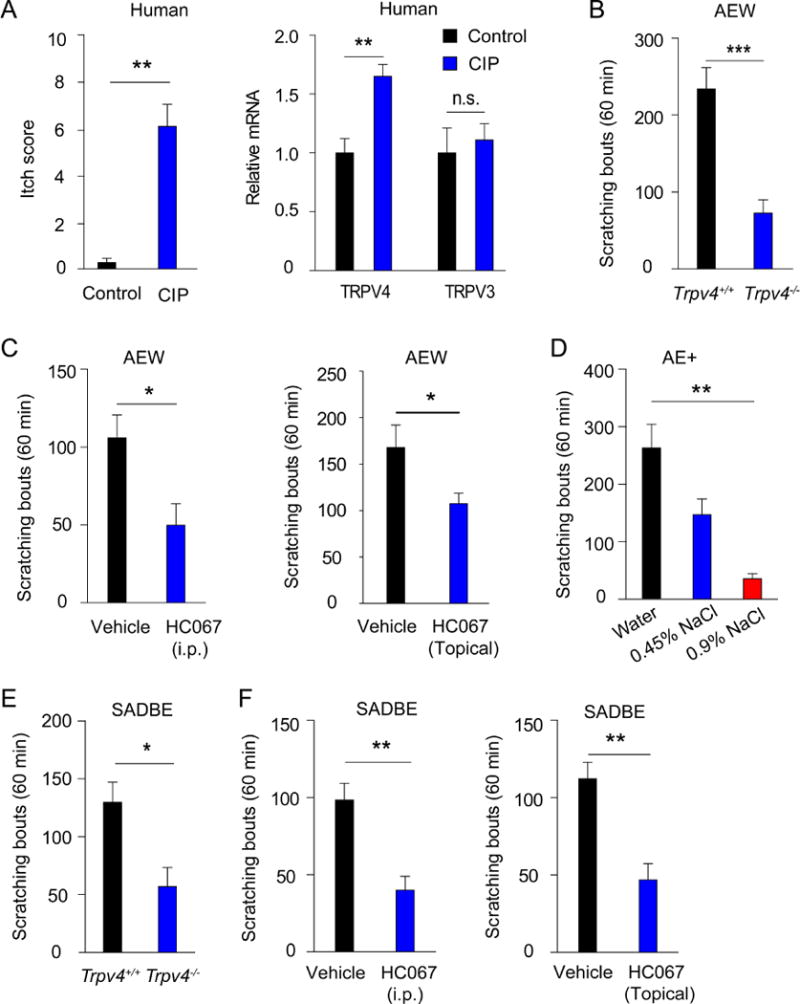Figure 1.

TRPV4 expression is elevated in skin biopsies of CIP patients and TRPV4 function is required for generating mouse models of both allergic and non-allergic chronic itch. A, The bar charts show the averaged itch numerical rating scale (NRS) scores and mRNA transcripts for TRPV4 and TRPV3 in CIP patients and health controls.. *p<0.05, **p<0.01, Student’s t test; n=8. n.s. not significant versus control group. B, Spontaneous scratches in Trpv4+/+ and Trpv4−/− mice after 7 days of AEW treatment. ***p<0.001, Student’s t test; n=7.. C, Spontaneous scratches in Trpv4+/+ mice after 7 days of AEW treatment were reduced by HC067 (20 mg/kg, i.p or topical application) compared with vehicle. *p<0.05, Student’s t test; n=8–9. D, Spontaneous scratches after the treatment with the 1:1 mixture of acetone and ether followed by 0.9% NaCl, 0.45% NaCl, or distilled water, respectively. **p<0.01, ANOVA; n=5–7. E, Spontaneous scratches in Trpv4+/+ and Trpv4−/− mice after SADBE treatment. *p<0.05, Student’s t test; n=6. F, SADBE-induced spontaneous scratches in Trpv4+/+ mice after treatment with HC067 (20 mg/kg, i.p or topical application) or vehicle. *p<0.05, Student’s t test; n=5–6.
